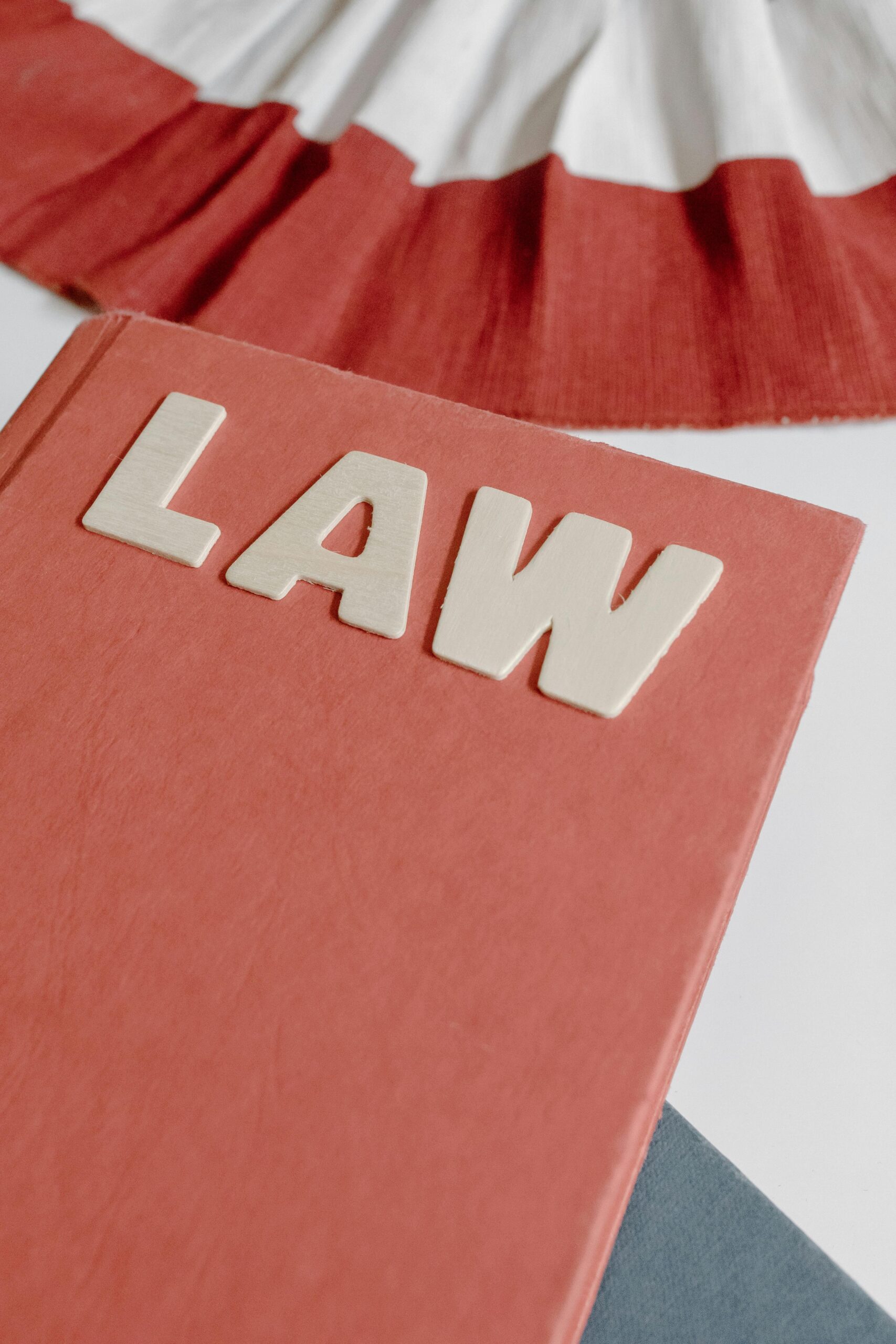Are you curious about how much does law school cost? You’re not alone! Many aspiring lawyers face the daunting task of figuring out the true financial burden of a legal education. While the tuition fees are often the most visible expense, there are hidden costs that can quickly add up, leaving students in a financial pickle. Did you know that beyond tuition, law students may encounter textbook fees, bar exam costs, and even living expenses that can dramatically inflate their budget? It’s crucial to uncover these hidden expenses to truly understand the total cost of law school. In this post, we’ll explore not just the typical costs associated with law school but also delve into the often-overlooked expenses that can catch you off guard. What if I told you that budgeting for law school could save you thousands in the long run? If you’re ready to take control of your law school finances, read on! Discover the ins and outs, and arm yourself with the knowledge needed to navigate the financial landscape of legal education. Your future in law starts with understanding the costs involved—let’s dive deep into the numbers today!
Breaking Down the Law School Tuition: What You Need to Know About Average Costs in 2023
Deciding to go to law school is a big step for many aspiring attorneys, but one of the first questions that often comes up is how much does law school cost? In 2023, the average tuition for law schools varies significantly across the country, and New York is no exception. With rising educational expenses and living costs, understanding the complete picture of law school tuition helps prospective students prepare financially.
Average Law School Tuition in 2023
In 2023, the average tuition fees for law school in the United States ranges from around $20,000 to more than $70,000 per year. The differences in tuition can depend on whether the school is public or private, its location, and its prestige. Here’s a quick breakdown of the average costs:
- Public Law Schools: $20,000 to $50,000 per year for in-state students.
- Private Law Schools: $40,000 to $70,000 or higher.
- Top-tier schools (like Harvard or Yale): often exceed $70,000 annually.
In New York, law schools are on the higher end of the spectrum. For instance, Columbia Law School and NYU Law School, two of the most prestigious institutions in the country, charge upwards of $70,000 per year.
Hidden Costs You Might Overlook
It’s not just tuition that prospective law students need to consider. There are a number of hidden expenses that can add up quickly. Here’s a list of common hidden costs associated with law school:
- Books and Supplies: Can range from $1,000 to $2,000 per year.
- Living Expenses: Rent, food, and transportation can easily add another $20,000 to $30,000 annually, especially in New York.
- Bar Exam Preparation: Courses can cost anywhere from $2,500 to $4,000.
- Health Insurance: Often required, adding another $2,000 to $3,000 per year.
- Miscellaneous Fees: Application fees, graduation fees, and technology fees may add up to another few hundred dollars.
Financial Aid and Scholarships
Many law schools offer financial aid packages, so it’s important to research your options. Scholarships can significantly reduce your financial burden. Here’s how to find them:
- Merit-based Scholarships: Based on your academic performance, LSAT scores, or other achievements.
- Need-based Aid: For students who demonstrate financial need, this can be a crucial resource.
- Institutional Grants: Some schools provide grants specifically for their students.
Student Loans: A Necessary Evil?
Most law students end up relying on student loans to finance their education. The average law school graduate leaves school with around $160,000 in debt. This figure can change depending on the school and the student’s personal financial situation. Here’s a quick look at the types of loans available:
- Federal Student Loans: These typically have lower interest rates and more flexible repayment plans.
- Private Loans: Often have higher interest rates and less favorable repayment terms.
Cost Comparison: New York vs. Other States
When you compare New York law schools with those in other states, the costs can be staggering. For example, a public law school in a state like Texas might charge $30,000 per year for out-of-state students, while the top New York schools charge significantly more. Here’s a simplified comparison:
| State | Average Public Law School Tuition | Average Private Law School Tuition |
|---|---|---|
| New York | $55,000 | $70,000+ |
| Texas | $30,000 | $40,000 |
| California | $40,000 | $60,000 |
Preparing for Law School Financially
Planning for the financial aspects of law school is crucial. Here are some steps you can take to prepare:
- Create a Budget: Know your expenses and income ahead of time.
- Consider Part-time Work: Many law students work part-time to help cover costs.
- Network: Connect with current students and alumni for advice on managing expenses.
Ultimately, the cost of law school is a significant investment in your future. By understanding the tuition and hidden expenses, as well as exploring financial aid options, you can make informed decisions. It’s essential to research thoroughly and plan wisely before taking the plunge into this challenging yet rewarding field.
Unveiling Hidden Costs of Law School: Are You Prepared for These Surprising Expenses?
Thinking about going to law school? It can be a exciting journey, but many people forget to consider hidden costs that adds up quickly. While tuition is often the first thing that comes to mind, there are many other expenses that can take you by surprise. So, how much does law school really cost? Let’s dive into the details and unveil those hidden expenses you might not have thought about.
The Basics of Law School Tuition
First, you gotta know that law school tuition varies widely, depending on where you go. Public schools typically charges less than private institutions. On average, tuition could range from $20,000 to over $70,000 a year. Think about this:
- Public Law Schools: $20,000 – $50,000 yearly for in-state students
- Private Law Schools: $40,000 – $70,000 yearly
But remember, this is just the tuition part. You might be thinking, “How much does law school cost after adding other fees?” That’s where it gets interesting.
Hidden Fees and Expenses
Law school ain’t just about tuition. You also have to think about additional costs which can pile up. Here are some of the most common hidden expenses:
- Books and Supplies: Law textbooks can be outrageously expensive. Expect to spend around $1,000 – $2,000 a year just for books.
- Bar Exam Fees: Preparing for the bar exam can costs thousands. Registration fees, study materials, and prep courses can total $2,000 – $4,000.
- Living Expenses: Depending on where your school is, rent, food, and other living costs can vary wildly. Urban areas are generally more expensive. You might need $15,000 – $30,000 a year just to get by.
- Health Insurance: Some schools require students to have health insurance. If you don’t already have it, this could add $2,000 or more per year.
- Technology Fees: Many law schools has technology fees that could be around $500 – $1,000 annually, covering things like online databases and software.
- Travel Costs: If you’re from out of state or have internships, traveling back and forth can be costly. Budget at least $500 – $1,500 a year for this.
Breaking Down the Costs
Let’s break this down a bit further. Here’s a table showing common expenses for one year of law school:
| Expense Type | Estimated Cost |
|---|---|
| Tuition | $20,000 – $70,000 |
| Books and Supplies | $1,000 – $2,000 |
| Bar Exam Preparation | $2,000 – $4,000 |
| Living Expenses | $15,000 – $30,000 |
| Health Insurance | $2,000+ |
| Technology Fees | $500 – $1,000 |
| Travel Costs | $500 – $1,500 |
| Total Estimated Cost | $41,500 – $109,000+ |
Financial Aid and Scholarships
Worried about how to afford all these expenses? Many students turns to financial aid, scholarships, and loans. There are several options available:
- Federal Loans: These are usually the most common option. They tend to have lower interest rates than private loans.
- Scholarships: Some schools offers merit-based or need-based scholarships. Check with your school’s financial aid office for what’s available.
- Work Study Programs: Some students works part-time during school. It can help offset costs significantly, but balancing work and studies can be tough.
The Cost of Opportunity
While you are studying, remember that you might not be earning a salary. The opportunity cost of attending law school also needs to be considered. If you were working instead of studying, you could be making a salary. Depending on where you from, this could be anywhere from $30,000 to $70,000 a year.
Are You Prepared?
So, are you prepared for the hidden costs of law school? It’s crucial to do your research and plan ahead. Knowing how much law school cost can help you make informed decisions. Don’t just look at tuition, think about all the other expenses too. Talk to current students, financial aid advisors, and look for resources to help you navigate these waters.
Make sure you’ve accounted for all these factors before you take the plunge into law school. It could save you a lot of stress and money down the line. And remember, the journey to becoming a lawyer is worth it, but only if you’re prepared for what lies ahead.
Law School Financial Aid: How to Maximize Scholarships and Minimize Debt in 2023
Law school can be a path to a rewarding career in law, but it’s also a financial commitment that can leave students in a heap of debt. In 2023, understanding how to navigate law school financial aid is crucial. So, how much does law school cost? It’s more than just tuition; there’s a whole lot more to consider. Let’s dive into how you can maximize scholarships and minimize debt.
The Cost of Law School: Breaking It Down
The cost of attending law school varies widely depending on the school, location, and other factors. On average, you might expect to pay anywhere from $30,000 to $60,000 per year in tuition alone. But wait! That’s just the tip of the iceberg. Here’s a breakdown of the potential costs involved:
- Tuition and Fees: This is the primary expense. Public law schools tend to be cheaper than private ones.
- Living Expenses: Rent, food, and utilities can add up. In New York City, for example, living costs can easily reach over $2,000 a month.
- Books and Supplies: Law books, which often used, can cost between $1,000 and $2,000 a year.
- Bar Exam Costs: This includes study materials, bar prep courses, and application fees, which can be upwards of $3,000.
- Health Insurance: Most schools require you to have health insurance, which can be another $2,000 or more annually.
Uncovering Hidden Expenses
Most students don’t account for all these costs. Here’s what you might not have thought about:
- Transportation: Commuting costs can pile up, especially if you need to travel for internships or court appearances.
- Networking Events: Attending industry events, workshops, and seminars can be pricey.
- Extracurricular Activities: Law reviews, moot court competitions, and other activities often require fees.
Maximizing Scholarships in 2023
Scholarships are a fantastic way to reduce your financial burden, but competition is fierce. Here are some strategies you can use to maximize your chances of receiving financial aid:
- Research Early: Start looking for scholarships as soon as you decide to apply to law school. Many scholarships have early deadlines.
- Tailor Your Applications: Customize your essays and applications for each scholarship. Highlight your unique experiences and goals.
- Look for Smaller Scholarships: While larger scholarships are appealing, smaller ones might be easier to obtain.
- Network: Connect with current students and alumni. They can provide valuable insights and might know of scholarships that aren’t widely advertised.
- Apply for Federal Aid: Don’t forget to fill out the Free Application for Federal Student Aid (FAFSA). It’s required for most need-based scholarships.
How to Minimize Debt
Reducing the amount you borrow is crucial. Here are some practical tips:
- Work During School: Consider part-time jobs or internships. Many law schools offer work-study programs.
- Choose an Affordable School: If you’re looking at schools with similar programs, pick the one with the lowest tuition.
- Consider Public Service: Some law schools offer loan forgiveness programs for those who choose to work in public service after graduation.
- Create a Budget: Track your expenses and stick to your budget. This will help you avoid unnecessary debt.
Financial Aid Resources and Tools
There are many resources available for law students looking for financial aid:
- Law School Financial Aid Offices: They can provide detailed information on scholarships and loans.
- Online Scholarship Databases: Websites like Fastweb and Niche can help you find scholarships that fit your profile.
- Professional Organizations: Groups like the American Bar Association often have scholarship listings and resources.
A Quick Snapshot of Average Law School Costs
Here’s a quick table to help you understand the average costs associated with law school:
| Expense Category | Average Cost (per year) |
|---|---|
| Tuition and Fees | $30,000 – $60,000 |
| Living Expenses | $24,000 – $36,000 |
| Books and Supplies | $1,000 – $2,000 |
| Bar Exam Costs | $3,000+ |
| Health Insurance | $2,000+ |
Being well-informed about law school financial aid can help you make smarter decisions, saving you money and stress. It’s important to be proactive in researching scholarships, budgeting, and understanding all of the costs involved. The financial landscape of law school is complicated, but with the right strategies, you can minimize debt and focus on what really matters—your education and future career in law.
The True Price of a Legal Education: Beyond Tuition—Discover Essential Fees and Costs
Pursuing a career in law is often seen as prestigious and rewarding, but many prospective students overlook the full financial picture when considering how much does law school cost. The truth is, tuition is just the tip of the iceberg. There’s a whole range of additional fees and hidden expenses that can pile up and catch you off guard. Let’s dive deep into what you really need to know about the true price of a legal education.
Tuition Fees: The Baseline Cost
First, let’s talk about tuition. The average tuition for a law school in the United States is around $50,000 per year. However, this can vary significantly depending on the institution. For instance:
- Ivy League schools like Harvard or Yale can charge upwards of $70,000 annually.
- Public law schools typically fall between $30,000 to $50,000 for in-state residents, while out-of-state students can pay much more.
But, don’t forget, tuition is just the beginning.
Additional Fees You Might Not Expect
When you’re budgeting for law school, you gotta take into account several additional costs that can add up quickly. Here’s a breakdown of common extra fees:
- Application Fees: Most schools charge between $50 to $100 just to apply.
- Bar Exam Fees: After you graduate, you’ll need to sit for the bar exam, which can cost between $500 to $2,000 depending on the state.
- Textbooks and Supplies: Law books are notoriously expensive. Expect to spend anywhere from $1,000 to $2,500 per year.
- Technology Fees: Many schools charge a tech fee for access to online resources, which can add another few hundred dollars to your bill.
- Health Insurance: Some schools require students to have health insurance, which can range from $2,000 to $5,000 annually.
Living Expenses: Don’t Overlook These Costs
Living expenses are another significant factor in the overall cost of law school. Depending on where you study, these can vary a lot. In cities like New York, living costs can be insane. Here’s what to consider:
- Rent: In New York City, average rent for a one-bedroom apartment can be about $3,000 per month. That’s $36,000 a year!
- Food: Budgeting around $300 to $600 monthly for food is realistic, so that’s another $3,600 to $7,200 annually.
- Transportation: Depending on your location, public transport could cost you around $100 to $200 per month, or more if you’re driving.
The Hidden Costs of a Legal Education
If you think you’ve accounted for everything, think again! There are several hidden costs often ignored. Here are some you should prepare for:
- Networking Events: Attending legal seminars and networking events can cost hundreds of dollars, but they’re essential for career building.
- Internships: Many internships are unpaid, meaning you may need to support yourself while gaining valuable experience.
- Professional Development: Workshops, certifications, or additional training can cost extra, usually between $100 to $500 per course.
- Miscellaneous Fees: Things like printing documents, copying cases, or even court visit fees can contribute to your overall expenses.
Understanding Financial Aid Options
Most students don’t pay the full sticker price thanks to financial aid. Here’s a quick look at common aid options:
- Scholarships: Many law schools offer merit-based or need-based scholarships. Research what your schools offer.
- Federal Student Loans: You can apply for federal loans that often have lower interest rates.
- Private Loans: These can be more expensive, but sometimes necessary to cover the full cost.
- Work-Study Programs: Some schools provide work-study options, allowing you to earn money while studying.
Comparing Costs: Public vs. Private Law Schools
Here is a simple comparison to illustrate how costs can vary between public and private institutions:
| Type of School | Average Tuition Cost | Average Living Expenses | Total Estimated Annual Cost |
|---|---|---|---|
| Public In-State | $30,000 | $20,000 | $50,000 |
| Public Out-of-State | $50,000 | $20,000 | $70,000 |
| Private | $70,000 | $20,000 | $90,000 |
As you can see, costs can vary greatly depending on the law school you choose.
When you consider how much does law school cost, it becomes clear that tuition is only a small part of the equation. Hidden expenses, living costs, and additional fees can inflate the total investment significantly. It’s essential to research thoroughly and prepare financially before embarking on this challenging but rewarding journey
Is Law School Worth the Investment? Analyzing Return on Investment and Career Outcomes
Is law school worth the investment? This question has been asked by many aspiring lawyers, and it’s not an easy one to answer. It involves a deep dive into costs, potential earnings, and the overall value of a law degree. In this article, we gonna analyze the return on investment (ROI) of law school, discuss how much it really cost, and uncover some hidden expenses that prospective students might not consider.
The Cost of Law School
First off, let’s talk about the elephant in the room—how much does law school cost? The total price can vary significantly depending on the school. Tuition for a three-year program at a private law school can range from $40,000 to over $70,000 per year. Public law schools might charge between $25,000 and $50,000 for in-state students, but out-of-state folks often pay much more.
Here’s a quick breakdown of the average costs:
Tuition:
- Private Law Schools: $40,000 – $70,000 per year
- Public Law Schools (In-State): $25,000 – $50,000 per year
- Public Law Schools (Out-of-State): $40,000 – $60,000 per year
Additional Expenses:
- Books and Supplies: $2,000 – $4,000 per year
- Living Expenses: $15,000 – $30,000 per year
- Bar Exam Preparation: $3,000 – $5,000
- Bar Exam Fees: $1,000 – $2,000
So, when you add all these up, the total investment for a three-year degree can easily reach $150,000 to $300,000 or more.
Analyzing Return on Investment (ROI)
After spending all that money, what can a law degree bring you? The ROI for law school can be quite diverse. Many factors influences outcomes, including the law school’s prestige, your area of specialization, and where you decide to practice.
According to the American Bar Association, the average starting salary for a lawyer in the United States is about $70,000. However, graduates from top-tier law schools can command salaries upwards of $160,000 or more, especially if they land a job at a big firm in a major city.
Here’s a comparison of average starting salaries based on law school rankings:
- Top 10 Law Schools: $160,000+
- Top 50 Law Schools: $80,000 – $120,000
- Lower-ranked Schools: $50,000 – $70,000
However, it’s not just about salary. Many law graduates find jobs that provide excellent benefits and career advancement opportunities, such as:
- Health insurance
- Retirement plans
- Paid time off
Hidden Expenses to Consider
When budgeting for law school, it’s crucial to think about hidden costs that can add up quickly. Here’s a list of some expenses that often caught students off guard:
- Networking Events: Many law schools encourage students to attend various networking events, which can have registration fees.
- Travel Costs: Some students might need to travel for internships or job interviews, which can add up.
- Technology Fees: Law schools often have technology fees for accessing online resources.
- Health Insurance: Some schools may require you to have health insurance, which could be an additional cost if you’re not covered elsewhere.
- Miscellaneous Fees: Library fees, student organization dues, and more can also sneak in.
Career Outcomes and Job Market Trends
The job market for lawyers can be competitive, and the outcomes can vary greatly. According to the National Association for Law Placement, about 79% of law graduates found employment within ten months of graduating. However, this number can vary based on the economic climate and the geographical area.
Here are some common career paths for law graduates:
- Corporate Lawyer
- Public Defender
- Judge
- Legal Consultant
- In-House Counsel
Final Thoughts
When you weigh the costs and potential earnings, the decision to attend law school can be daunting. It’s not just about the sticker price; it’s about the long-term investment in your future. While many graduates do find fulfilling careers that justify the expense, it’s essential to carefully consider your options, the financial implications, and the specific job market in your desired field.
If you’re thinking about law school, it might be wise to talk to current students and professionals in the field. They can provide a clearer picture of what to expect and help you make a more informed decision.
Conclusion
In conclusion, the cost of law school is a significant investment that varies widely depending on factors such as the type of institution, location, and duration of the program. We explored the average tuition fees for public and private law schools, which can range from $20,000 to over $60,000 per year. Additionally, we discussed ancillary expenses such as books, living costs, and bar exam preparation, which can further increase the overall financial burden. It’s crucial for prospective law students to consider financial aid options, scholarships, and potential return on investment when evaluating their choices. As you navigate this important decision, take the time to research thoroughly and connect with current law students or alumni to gain insights about their experiences. By doing so, you can make a well-informed decision that aligns with your career aspirations and financial situation. Remember, investing in your education is the first step toward a rewarding legal career.



